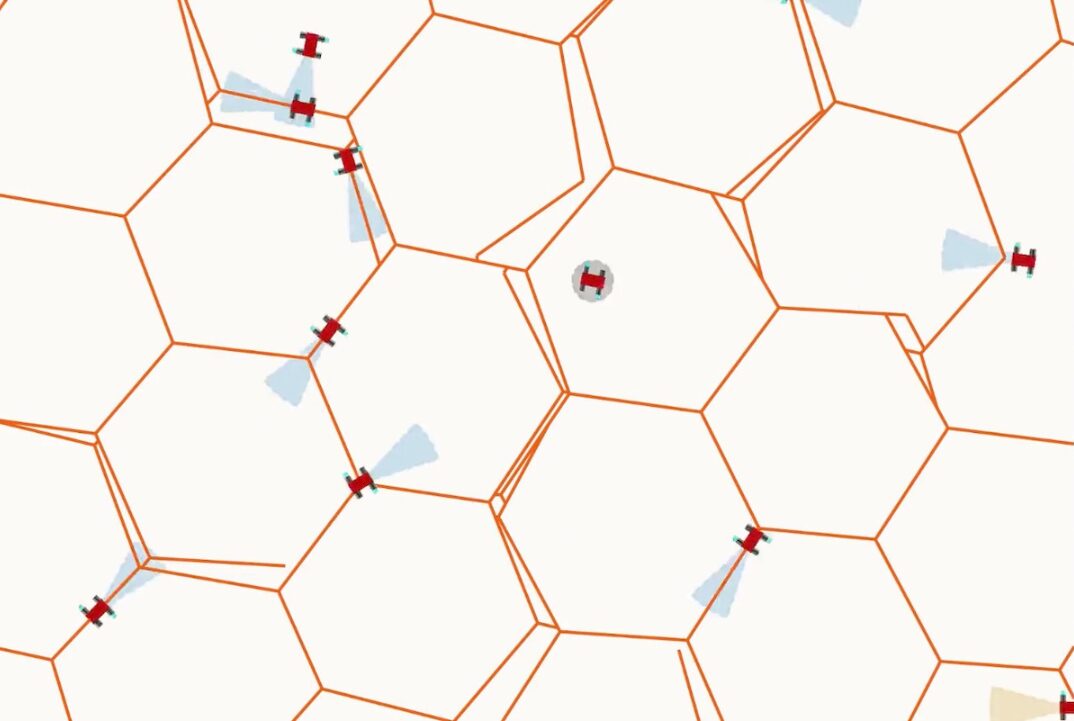Bees, ants and termites don’t need blueprints. They may have queens, but none of these species breed architects or construction managers. Each insect worker, or drone, simply responds to cues like warmth or the presence or absence of building material. Unlike human manufacturing, the grand design emerges simply from the collective action of the drones — no central planning required.
Now, researchers at Penn Engineering have developed mathematical rules that allow virtual swarms of tiny robots to do the same. In computer simulations, the robots built honeycomb-like structures without ever following — or even being able to comprehend — a plan.
“Though what we have done is just a first step, it is a new strategy that could ultimately lead to a new paradigm in manufacturing,” says Jordan Raney, Associate Professor in Mechanical Engineering and Applied Mechanics (MEAM), and the co-senior author of a new paper in Science Advances. “Even 3D printers work step by step, resulting in what we call a brittle process. One simple mistake, like a clogged nozzle, ruins the entire process.”
Manufacturing using the team’s new strategy could prove more robust — no hive stops construction because a single bee makes a mistake — and adaptable, allowing for the construction of complex structures onsite rather than in a factory. “We’ve just scratched the surface,” says Raney. “We’re used to tools that execute a plan. Here, we’re asking: how does order emerge without one?”
Read the full article by Ian Scheffler at Penn Engineering Today.

